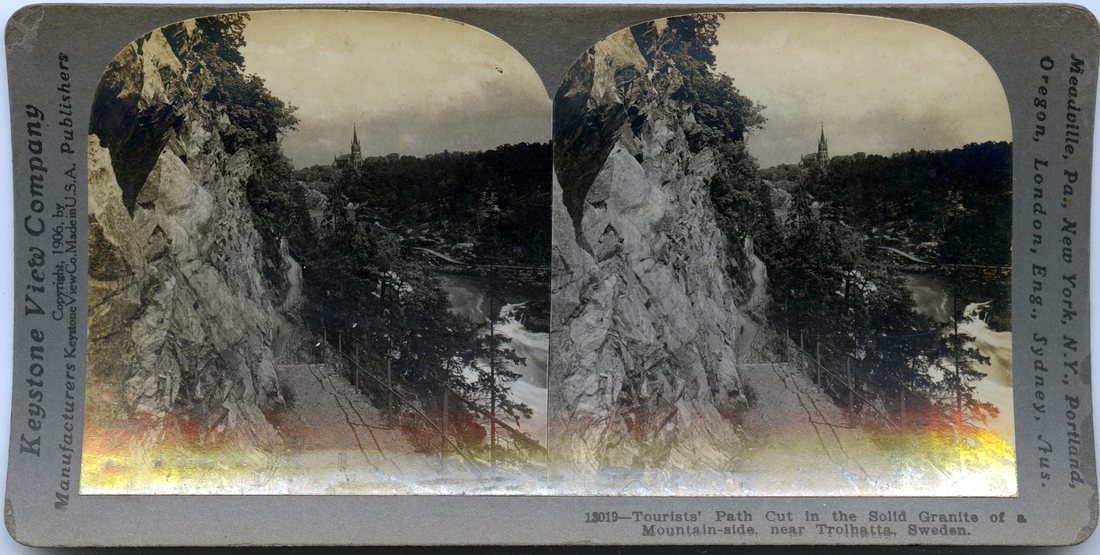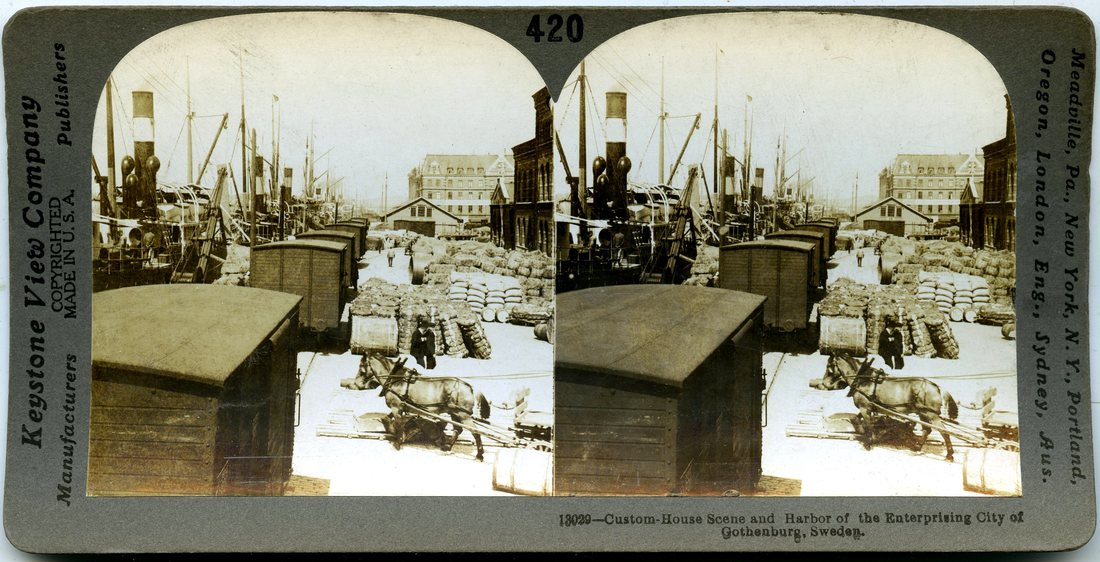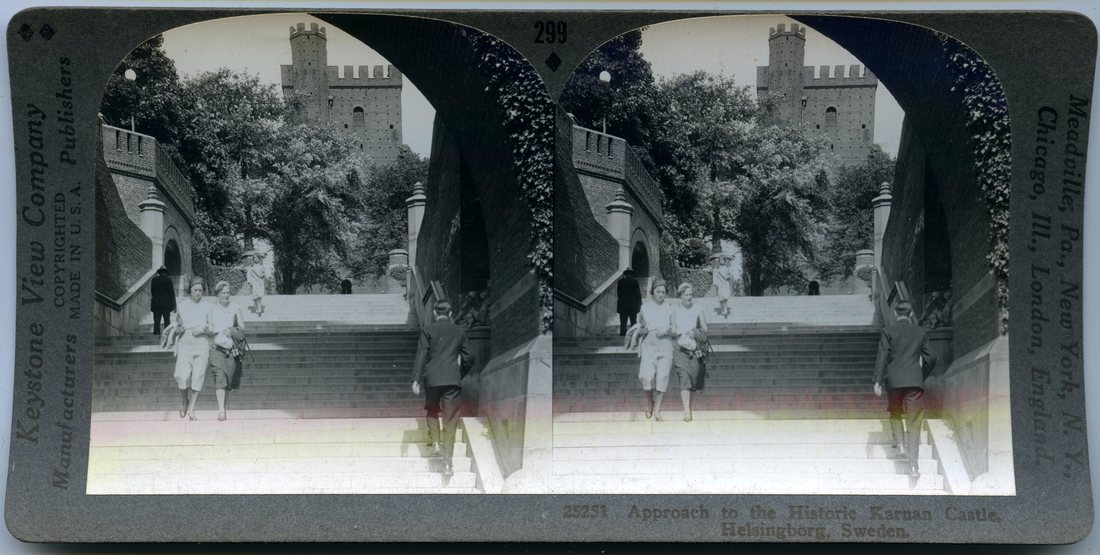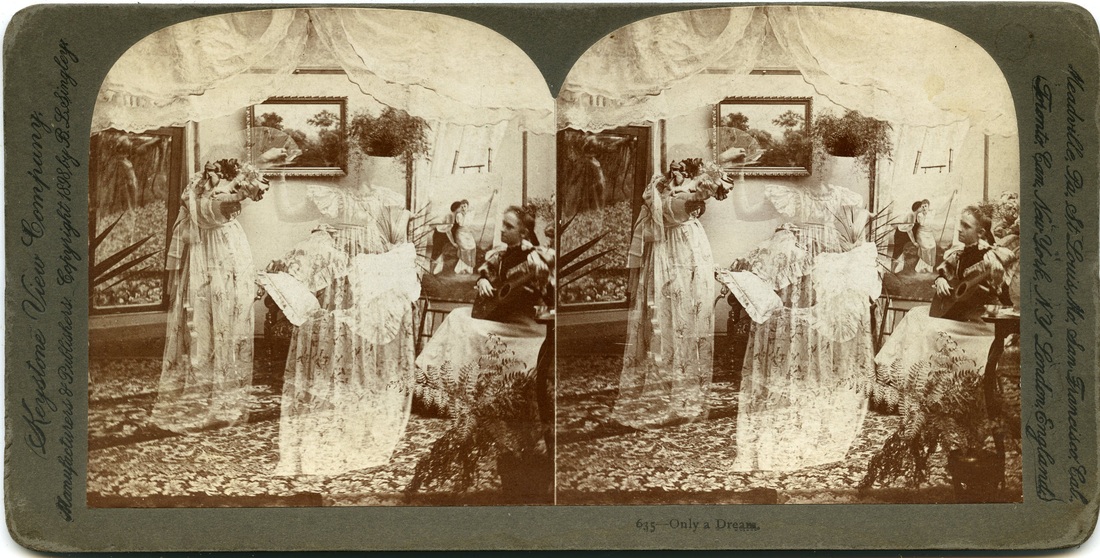Keystone View Company - Meadville, Pennsylvania New York Toronto London Sydney
|
Hjem. Tilbage til hovedsiden HER
|
|
The Keystone View Company was founded in 1892 by B. L. Singley in Meadville, Pennsylvania. This might not sound like an auspicious location, far from the photographic centers of New York, Boston, and Philadelphia, and originally the operation did indeed have a "backwoods," quality, turning out distinctly second-rate stereoviews and barely making the founder a living. But it rapidly improved and eventually became not only the world's largest but also the best view company. In the formative days Singley took all the images; later there were dozens of staff photographers. Equally importantly, in the early 1900s, when stereoviewing was declining and other companies were in trouble, Keystone bought their stocks and incorporated them into their own holdings. Notable amongst many such purchases were the huge and varied inventories of B. W. Kilburn, the H. C. White Company, Underwood & Underwood. As a result, Keystone was said to have had some 2 million negatives by the mid-1930's. While this is likely a wild exaggeration they did have about 50,000 numbered views available. They developed the technique of consistently producing beautifully clear, crisp prints which were a delight to view; originally they were mounted on tan curved cards and later on their trade-mark dark gray curved mounts. The company also emphasized the use of informative text on the back of the views, and popularized the concept of boxed sets which had been innovated by the Underwood Brothers.
|
By the 1920s the Keystone Company was the sole surviving major producer of conventional card-mounted views anywhere in the world. They had offices in London, Paris, Sidney, Capetown, Rio de Janeiro and Tokyo. Part of this prominence was derived from the sale of World War I stereograph sets, as Keystone was one of the only publishers to secure permission to photograph battlefields and military operations. Unfortunately, permission was not granted until the end of 1918, just before Armistice, so many of the photographs depict scenes taken after the end of the war.
As general interest in stereo dropped off with the advent of postcards, radio and movies, Keystone began emphasizing the educational value of their product and the use of stereo in the diagnosis and treatment of eye problems. The company survived into the 1970s, continuing to produce better and better views and viewers while public interest dwindled to a non-viable level, commercially. As one critic rather unkindly remarked, "Keystone perfected the buggy whip just as Ford began producing cars." When the company folded up their stocks lay for some time largely unguarded in the Meadville factory and were looted of some of the better images. The remaining ones eventually went to the California Museum of Photography in Riverside, California. Kilde - source HER. |
13019. Tourists Path Cut in the Solid Granite of a Mountain-side near Trolhatta, Sweden. Keystone View Company.
13029. Custom-House Scene and Harbor of the Enterprising City of Gothenburg, Sweden. Keystone View Company.
25251. Approch to the Historic Karnan Castle, Helsingborg. Sweden. Keystone View Company.
Keystone, No. 635 - "Only a Dream. Goasts.



